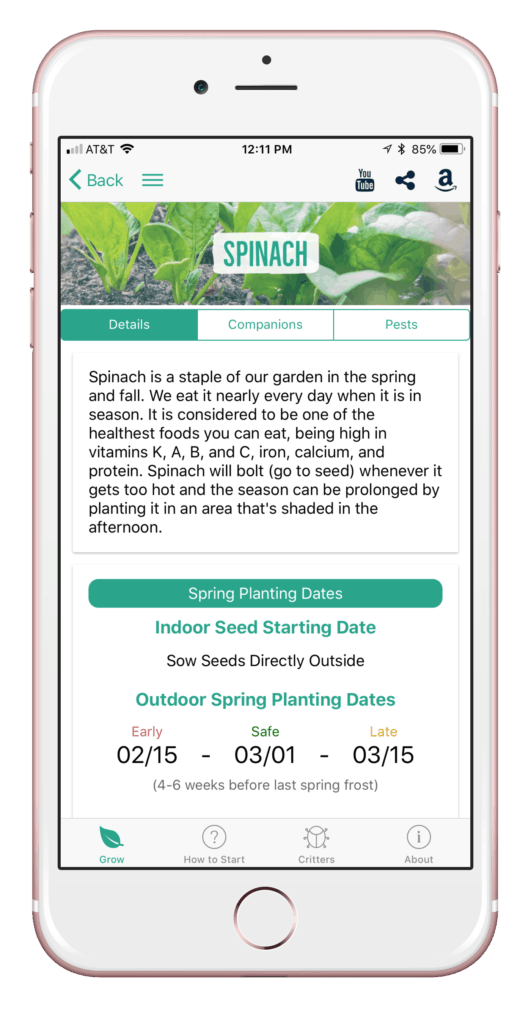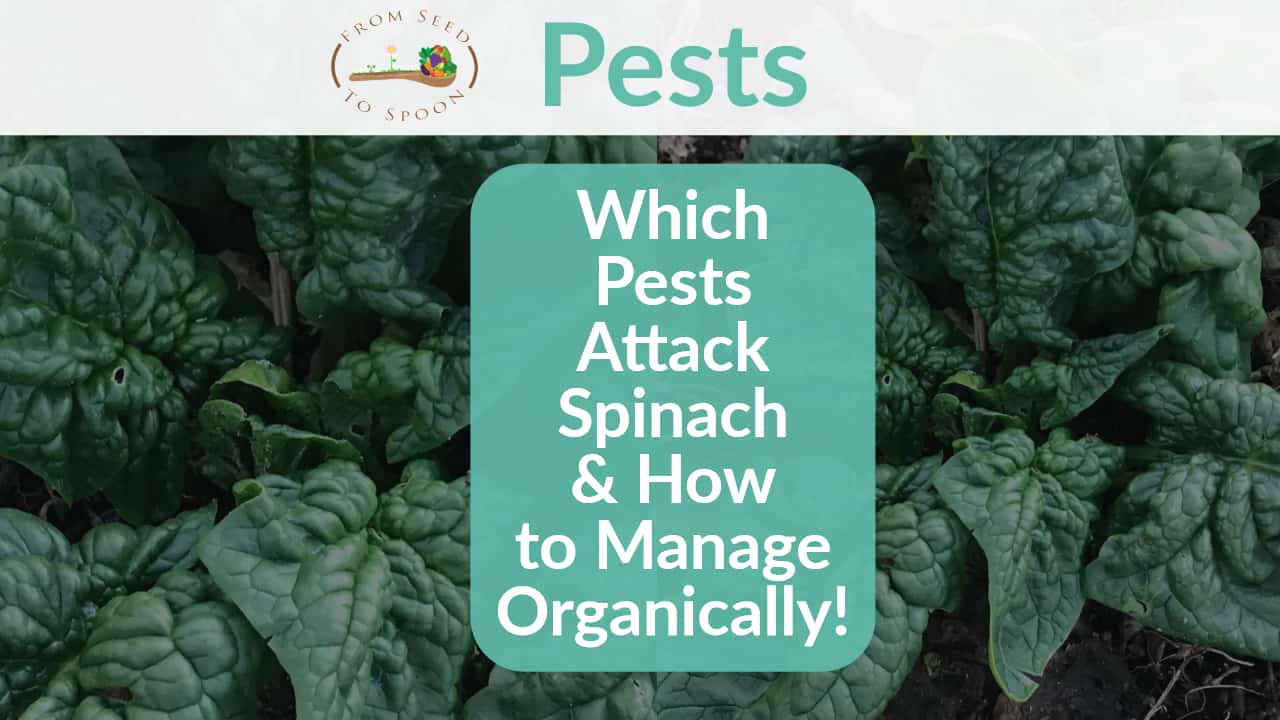
Aphids are tiny insects that can usually be found in groups on the undersides of leaves and stems. A few aphids can’t do much, but they reproduce quickly, are born pregnant, and can take over a plant in no time at all!
- Spray aphids off leaves with a blast of water from the sprayer and repeat as necessary for a few days
- Ladybugs are valuable ally and can be purchased to help with aphid control. Make sure you release them at night on plants that are infested with aphids, and it wouldn’t hurt to provide a source of water as well. They will quickly mate and lay their eggs, resulting in alligator-shaped larvae hatching and devouring aphids. A single ladybug can eat up to 5,000 aphids in their lifetime!
- Green lacewing larvae are voracious predators of many soft bodied insect pests, including several species of aphids, spider mites, thrips, whiteflies, leafhoppers, and others.

The cabbage looper is the caterpillar of a grayish moth with a silver spot in the middle of each wing. You can distinguish them from the cabbage worm by looking for 4 white stripes running down the body. The eggs are dome-shaped, light green, and are laid on the underside of the leaves.
- Hand-pick (or pay your kids a quarter each to handpick for you like we do!)
- Cover the plants with insect netting (floating row covers) from when they are babies. This will help to prevent them from becoming an issue!
- Use the organic pesticide, BTK (bacillus thuringiensis Kurstaki). BTK is a naturally occuring microorganism that sickens and kills caterpillars without harming butterflies, bees, and other beneficial insects. There are varied opinions regarding the safety of BTK, but it’s classified as an organic treatment and is certainly safer than using a more toxic pesticide.

Cutworms are the caterpillar of a brown or gray night-flying moth. The caterpillars are black, gray, or brown and are about an inch and a half long. These jerks can go through your entire garden of new seedlings extremely quickly! It’s important to watch out for them in your garden and do your best to protect again them. They look like little brown worms, and they like to spin around into circles around the plant, cutting it off at the base.
- Cover the plants with insect netting (floating row covers) from when they are babies. This will help to prevent them from becoming an issue!
- Cardboard “collars” can be made from toilet rolls or paper towel rolls and placed around each seedling to keep these cutworms out. You can also place toothpicks around seedlings so the worm cannot wrap around the stem.
- Diatomaceous earth can also be laid down around your seedlings to help get rid of them.
- Sprinkling coffee grounds or crumbled egg shells can help repel them from your seedlings as well.

Flea beetles are the extremely tiny insects that jump when disturbed. Even though these beetles are super small, they can quickly move through the leaves of plants, destroying the foliage in its path and spreading diseases.
- Insect netting (floating row covers) provide the best form of protection against flea beetles.
- Applying beneficial nematodes and neem oil can also be effective. Make sure not to apply the neem oil when the temperature is above 90, or else you could suffocate your plant!
- Sprinkle diatomaceous earth over areas you want to protect. Be careful though: DE can harm beneficial insects as well if they come in contact with it.
- Using a yellow sticky trap can trap these adults before they have a chance to lay their eggs.

Grasshoppers can consume an obscene amount of 1/2 their body weight in a day! This can account for a lot of damage fast if you have an infestation. Grasshoppers are brown in color with wings, large legs, and antennae.
- Clear out any debris in your garden that grasshoppers can use for cover or laying eggs.
- Use your companion plants to your advantage! The garlic odor can help deter them. You can use a homemade garlic spray or plant garlic around where you have a problem.
- Beneficial critters can be very helpful with this pest as well! Praying mantis (purchase here) can be helpful to fight off grasshoppers. Birds can come to the rescue as well.
- Placing insect netting (floating row covers) over your garden is the best way to prevent grasshoppers from attacking your plants.
- Applying neem oil is also another option for treatment, but make sure not to apply when the temperature is above 90, or else you could suffocate your plant!

Leaf miners that affect vegetables refers to a small gray-yellow fly. These flies lay tiny white eggs that turn into green maggots. These maggots can destroy the leaves of the plants in your garden.
- As always, prevention is key, which includes placing an insect netting (floating row cover) over your plants.
- Yellow sticky traps have been shown to be effective at catching these pests.
- Beneficial insects, such as green lacewings, ladybugs, and praying mantis, can be helpful to fight the leaf miners.
- Applying neem oil has also shown to be beneficial, but make sure not to apply when the temperature is above 90, or else you could suffocate your plant!

While we love having our pet rabbit to help with making free fertilizer, wild rabbits can be quite troublesome for your garden. These small mammals like to eat a lot of your greens and can be tricky to manage once they know where the food is. It is important to keep them out of your garden to protect your food!
- Placing an automated sprinkler to scare the rabbit away is helpful.
- Rabbits are scared of larger predators. Applying blood meal around the perimeter of your garden has been shown to deter rabbits. Rabbit repellent, fox urine granules, or even human hair and urine can help to deter them as well.
- You can also use a live animal cage trap to catch them.

These slimy creatures will eat just about anything in the garden. Slugs and snails typically will come out during the night time or on cloudy days. They are fairly easy to manage in your garden with these steps!
- Nighttime hunts are the best way to go about finding these creatures! Hand-picking and placing the slugs or snails in a salty or soapy solution will ensure that they are killed.
- You can set beer out in shallow saucers to attract then drown your slugs.
- Diatomaceous earth can also be laid down around your garden to help get rid of them.

These soil-dwelling pests, also known in their adult form as click beetles, attacks the plants soon after germination. It is important to treat for wireworms before it gets out of hand.
- The best way to prevent issues it to practice good crop rotation. Make sure to not plant vegetables of the same family in the same place each season. This should prevent them from becoming an issue.
- Tilling your soil each year will help to disrupt the breeding of these pests.
- Beneficial nematodes can also be purchased to help control wireworms.
Learn more about growing over 90 different foods, including how to manage various pests in our FREE iOS, Android, or new Universal Web App!


Carrie Spoonemore, co-founder of “From Seed to Spoon,” stands as a beacon of inspiration for gardeners and health enthusiasts alike. Her journey alongside her husband, Dale Spoonemore, in creating a platform that demystifies gardening and promotes a healthier lifestyle, has made a significant impact on individuals around the globe. Through the “From Seed to Spoon” app, Carrie has dedicated herself to empowering people to take control of their health and environment by growing their own food.
With a profound belief in the power of gardening to improve mental and physical health, Carrie’s contributions to the Seed to Spoon blog reflect her holistic approach to wellness. Her articles often focus on the nutritional benefits of homegrown fruits and vegetables, organic gardening practices, and the mental health benefits of spending time in nature. Carrie’s expertise in health science shines through in her detailed discussions on how specific plants can contribute to a balanced diet and overall well-being.
Carrie’s passion for gardening is deeply intertwined with her commitment to family and community wellness. She frequently shares personal stories of how gardening has brought her family closer together, offering practical tips for involving children in gardening activities and making it a fun, educational experience. Her writing encourages families to explore gardening as a means of spending quality time together while learning about nature and sustainability.
In addition to gardening advice, Carrie’s contributions to the blog include insights into the use of technology to enhance the gardening experience. She has played a crucial role in designing the “From Seed to Spoon” app to be user-friendly, ensuring that users of all ages and backgrounds can navigate the complexities of gardening with ease. Her vision for the app is not just as a gardening tool but as a vehicle for change, inspiring individuals to adopt a more sustainable lifestyle by growing their own food.
Carrie Spoonemore’s presence on the blog is marked by her compassionate approach to teaching and her unwavering belief in the transformative power of gardening. Her work continues to inspire a community of gardeners to pursue a healthier, more sustainable way of living, proving that with the right tools and knowledge, anyone can become a gardener and advocate for their health and the planet.







3 thoughts on “Which Pests Attack Spinach & How to Manage Organically!”